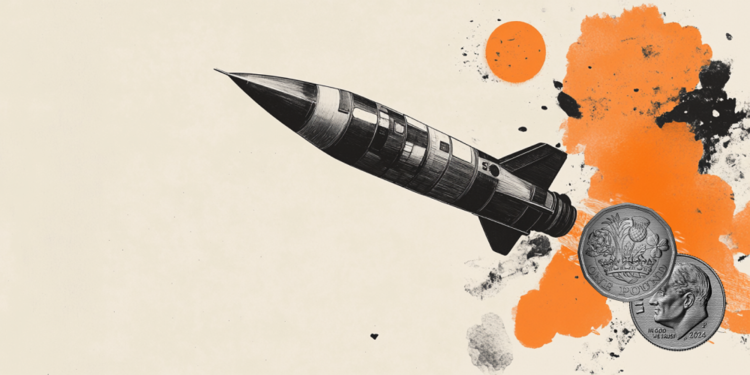Law on digital ruble
According to published According to the text of the law, the digital ruble will be issued by the Central Bank of the Russian Federation, which will act as the operator of the platform of the Russian state digital currency. It will be a complete analogue of paper and metal fiat rubles, as well as an electronic version moving through the banking system, including private cards. The rate of converting ordinary rubles into digital ones will be 1 to 1. You can get access to digital rubles at any commercial bank.
Tariffs for operations with digital rubles will be developed by the Central Bank of the Russian Federation. Until they are approved. True, earlier the chairman of the Central Bank of the Russian Federation, Elvira Nabiulina, promised that the transfers would be free. The digital ruble can only be used for payment purposes: it will not be possible to get a loan in digital rubles or interest on the balance.
The account may be suspended if you, the owner of the digital ruble, violate the rules of the CBR platform.
The law will come into force on August 1, 2023 in test mode. Initially, it will be tested by 15 banks, with a list of can be found on the website of the Central Bank of the Russian Federation.
Is the digital ruble a cryptocurrency?
Why the digital ruble is not a cryptocurrency
If you follow the origins, namely the concept of the creator of Bitcoin Satoshi Nakamoto, then the cryptocurrency must have decentralization, a certain degree of anonymity and the absence of financial intermediaries. Without the participation of intermediaries, the two parties making the transaction could not get along (peer-to-peer network). Actually, for these purposes, they developed the historically first cryptocurrency.
The digital ruble has none of the above. This is a purely centralized CBDC, which is operated by the Central Bank of Russia. He “prints digital rubles”, and is responsible for the safety of accounts, and is the operator of the platform.
There is no need to talk about decentralization, as well as about the absence of the necessary financial intermediaries. You can start at least with the fact that the entire system will be connected with ordinary commercial banks. Among other things, you, as the owner of the digital ruble, will disclose personal information, which is fundamentally contrary to the concept of impersonal balances in a system like Bitcoin. In addition, it will be possible to open only one account in digital rubles, but how to find out that a particular person does not own more than it should? Well, of course, ask him for documents.
There is another subtle nuance that explains why the digital ruble is not a cryptocurrency. There is a hint of this in the law itself, literally: “The digital steering wheel is not a digital currency.” It is clear that the law does not mention cryptocurrency either (there is no such definition in the regulatory framework).
Why do we need a digital ruble at all?
Appointment of the digital ruble
It is worth distinguishing between two points of view: official and unofficial. Let’s start with the first one. She outlined on the website of the Central Bank of the Russian Federation. Representatives of the regulator identified benefits immediately for citizens and businesses, the financial market and the state.
Most of the declared benefits, according to the Central Bank of the Russian Federation, will arise from citizens of the Russian Federation. Benefits include:
- general availability, since access to digital rubles can be obtained at any bank;
- unified system of low tariffs (let’s see how it will be in practice);
- availability offline;
- increased security;
- innovation;
- improvement of customer service.
Benefits for the financial market are two times less:
- increased competition;
- introduction of modern innovations in the form of smart contracts;
- emergence of a new payment infrastructure.
It is argued that the state will have the least benefit. There are only two points here:
- reducing the cost of managing payments to the budget;
- potential simplification of cross-border transfers.
But the unofficial point of view is a little different. Each digital ruble will have a unique marking in the form of a code. Thus, it will not differ in any way from its paper/electronic counterpart. This will make the entire transfer scheme more transparent for the Central Bank of the Russian Federation and, in theory, will complicate the creation of fraudulent schemes (although, as historical experience shows, criminal enthusiasts will still find loopholes).
Perhaps in the end, such a CBDC from the Central Bank of the Russian Federation will completely replace the fiat currency. Well, or at least, according to Elvira Nabiullina, it will also be used in international settlements.
There are questions about emission and its consequences (including in the form of inflation).
What should be expected in the near future?
Prospects for the digital ruble
Although the law says that its provisions will come into force on August 1, 2023, it does not mean that exactly on this date it will be possible to receive a salary in digital rubles or pay for purchases with them. While the system is at the stage of trial and error. The circulation of the CBDC will be worked out both from the technical and legal side. Note that now only 15 banks will participate in the testing of the digital ruble. In reality, there are dozens more credit institutions in Russia.
If someone fears that everyone will be transferred to digital rubles at once, then this will definitely not happen. First, it is now officially declared that the use of a new form of money is voluntary. Secondly, the process of introducing the digital ruble will take time. Legislation in the field of crypto-currencies cannot be worked out for a long time. Until recently, there was no clear definition of the concept of mining. And here it is necessary to carry out the physical implementation. The process will definitely not be one-step.
In short, the sensational law on the digital ruble simply set the time frame for the start of a new stage in the introduction of another form of fiat money in Russia. The legislator made it clear: the digital ruble has nothing to do with cryptocurrency.
Source: Bits
I am an experienced journalist, writer, and editor with a passion for finance and business news. I have been working in the journalism field for over 6 years, covering a variety of topics from finance to technology. As an author at World Stock Market, I specialize in finance business-related topics.







